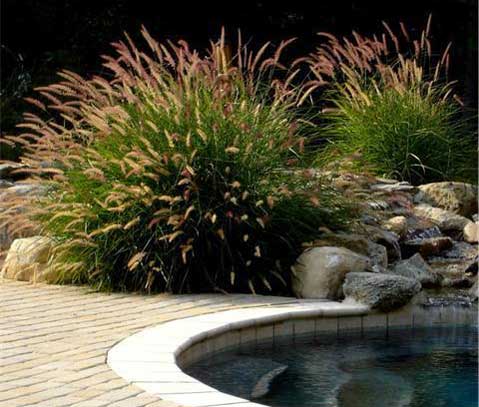Ornamental Grass Maintenance
Fall Is the Time to Cut These Warm Season Perennials

You joined the trend and now your garden sports one or more beautiful ornamental grasses. Their fluffy or wispy seed heads are looking fantastic until that one day when the whole plant just begins to look tatty. It’s gone from glorious gold to bleached-out straw. Fall is the time to cut these warm-season perennials all the way down. They are going dormant for the winter anyway, and if you clean them up now, you only have to sit back and wait for the new growth that will soon begin.
The most common, perhaps, is red fountain grass (Pennisetum setaceum ‘Rubrum’). If you pull the stalks away at the base, you will see the beginnings of the new green shoots. Cut all the old ones back to a few inches above that and you are done. Others in this category are maiden grass or eulalia (Miscanthus transmorrisonensis). In the mildest areas, it may remain mostly green, but will still benefit from a renewal now. Its close cousin, Japanese silver grass (M. sinensis), has several selections known as ‘Adagio,’ ‘Morning Light,’ or ‘Variegatus’ and all of them will reward you with renewed color and vigor if cut down before the cold weather. Feather reed grass (Calamagrostis X acutiflora ‘Karl Foerster’) is another large, dramatic grass that can retain its interesting flower heads for some months, so cut them for indoor arrangements and then shear the leaves for the compost heap.
If you didn’t cut back the cool-season grasses like giant needle grass (Stipa gigantea) when their flower heads were done in summer, you can cut them now as well. Remove just the old flower stems or cut the whole clump. Don’t try to cut them clear to the ground; rather, shear them back to a foot or slightly lower, protecting their above-ground growing points. Others in this category are quaking grass (Briza media) and blue oat grass (Helictotrichon sempervirens).
Most grasses are moderate to heavy feeders and will benefit from a handful of nitrogen-rich organic fertilizer, too. Sprinkle around and among the stems and water in thoroughly.
October Tips
• Cut stems of canna and ginger that have flowered to the ground. If the planting is very crowded, wait until early summer to dig and divide.
• Collect and compost leaves of deciduous trees as they begin to fall. Pile them in a corner and turn the pile a couple of times during the winter and they will produce a useful product by next spring.
• Put potted poinsettia plants in a dark place outside so that they receive 14 hours of darkness. They will produce flower buds in about six weeks.



